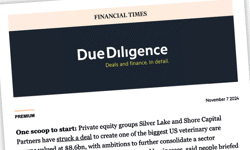One of the notable features of the publication is not just the practical guidance provided for judges, magistrates, journalists and lawyers (whether defence, prosecution or legal advisers to the court or media and their trainers) alike, but the degree of collaboration that has gone into the guidelines.
The joint guidelines have been revised by a specialist media barrister, Guy Vassell-Adams, following a meeting between the Lord Chief Justice, Lord Judge, the Society of Editors, the Newspaper Society, Times Newspapers Ltd, Trinity Mirror plc, the Press Association and Reuters.
The updated guidelines reflect and incorporate numerous changes in both statute and case law that have taken place in the last few years and that are relevant to the reporting of the criminal courts. Their publication has been welcomed from a range of interested parties working in the field.
Writing in the foreword to the guidelines, Lord Judge commented: “A new edition of the guidance was required, not least because, quite apart from any necessary updating, the issue of fresh guidance would have a beneficial impact on the open operation of the criminal justice system, principles which can bear endless repetition.”
The Lord Chief Justice stressed that the media played an indispensable role in supporting open justice and providing public scrutiny of the work of the courts.
The guidelines have been designed to provide a single useful reference for courts and media alike. A checklist sets out the points to consider before any restriction upon press access or reporting is made. It summarises the automatic and discretionary reporting restrictions and where the law permits such exceptions to the open justice principle. Each section concludes with a bullet point summary of the key principles designed to help users.
The publication of the guidelines was also welcomed by the Director of Public Prosecutions as well as a number of media organisations and specialists.
Keir Starmer QC, Director of Public Prosecutions, said: "I readily lend my support to this initiative. Openness and transparency are key to a fair trials system. Of course there will always be circumstances where, for totally good reason, reporting restrictions are required. This publication plays a really important role in promoting a better understanding of such situations. But I am clear that prosecutors should oppose reporting restrictions that they do not feel are necessary for a fair trial."
Bob Satchwell (pictured), Executive Director of the Society of Editors, said: “With the help of Lord Judge and the JSB this collaboration has helped to transform the relationship between the courts and the media for the benefit of the justice system and therefore the public. A clear statement of the rules plus common sense guidance helps everyone and this update recognises the achievement since the first edition as well as changes in the law.”
Alastair Brett, Legal Manager at the Times and Sunday Times said that the updated guidelines would make a valuable contribution to the day to day work in courts up and down the country and not only assist the judiciary in knowing when and in what circumstances reporting restrictions might need to be imposed but also help journalists know when to approach the Bench with concerns over the principle of open justice.
Santha Rasaiah, PERA Director of the Newspaper Society, said: “The local media play a crucial role in keeping the whole community informed of the work of the local courts. The Newspaper Society was delighted to continue this ‘remarkable collaboration’ and work again with the JSB on the new guidelines at the invitation of Lord Judge. We will be encouraging editors to take this opportunity to discuss with their local courts how they can work together to promote public understanding of the courts.”
In addition to the publication of the guidelines on the JSB’s website, they will also be available on the websites for the Society of Editors and the Newspaper Society. A dedicated checklist is also being included in the Magistrates’ Courts’ Bench Book.










